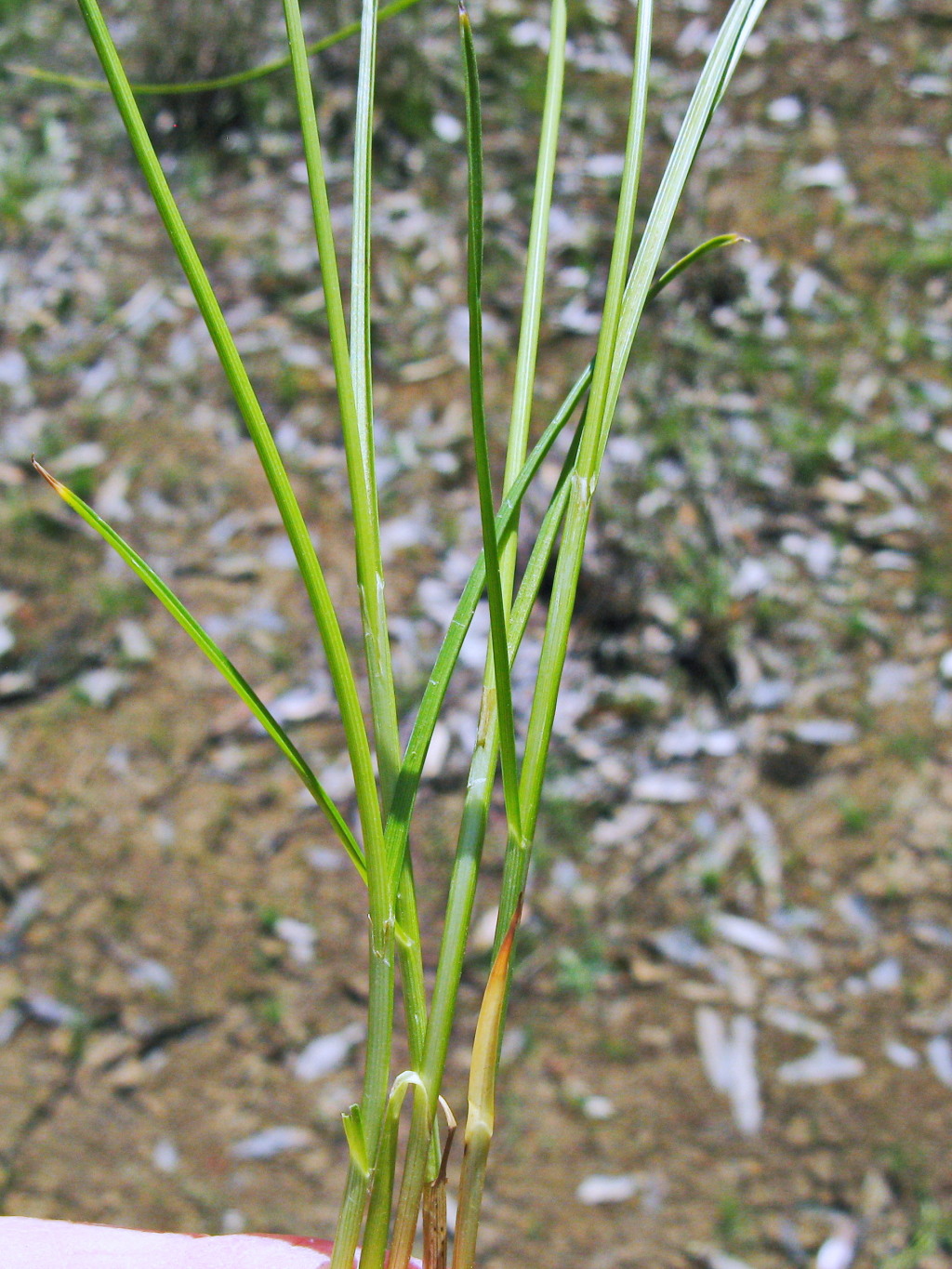Carex inversa
R.Br. Knob SedgeRhizome long and slender (< 2 mm diam.), or sometimes short; shoots ± loosely tufted, or rarely densely tufted. Culms erect, terete, smooth, 8–50 cm long (rarely as short as 1 cm and enclosed by leaves), (0.7–)1–1.5(–2.5) mm diam. Leaves mostly shorter than culms, 0.7–2 mm wide; sheath dark brown, persisting as fibrous remains; ligule obtuse to rounded. Inflorescence erect, 0.7–3 cm long, with 2–6 spikes solitary at nodes; lowest involucral bracts exceeding inflorescence. Spikes sessile, ± contiguous, spreading to erect at maturity, to 1(–1.5) cm long; all spikes with female flowers above male flowers or sometimes with male flowers (1 to few) above female flowers; glumes acuminate to obtuse, mostly short- to long-mucronate, whitish to pale yellow-brown (rarely orange-brown) with green midrib; female glumes 2–3(–5) mm long; utricles 2.2–4.5 mm long, 1.0–2.1 mm diam., broad-obovate to elliptic in outline, ± strongly several–many-nerved, sometimes transversly wrinkled between nerves, densely minutely hispid on narrowly winged margins and beak, green to yellowish; beak 0.3–1.1 mm long, with apex split; style 2-fid. Nut obovoid to broad-ellipsoid, lenticular, pale to dark yellow-brown.
LoM, MuM, Wim, GleP, VVP, VRiv, RobP, MuF, GipP, OtP, WaP, Gold, CVU, GGr, DunT, NIS, EGL, EGU, HSF, HNF, OtR, Strz, MonT, VAlp. All States (including Lord Howe Is.) except NT, also Norfolk Is. New Zealand. Naturalised in USA (California), and recorded as a casual wool alien in United Kingdom. Widespread in grassland and open forest communities from near sea-level to the subalps, uncommon to rare in the far north-west and on heavy soils of Victorian Volcanic Plain and Wimmera.
A very variable species with several forms possibly warranting formal recognition. Most forms are usually long-rhizomatous, but there is also a form that is shortly-rhizomatous and often forms dense tussocks. The utricle varies in size, rugosity, thickness of nerves and relative length of beak. Several varietal names exist, but their application is uncertain, and are hence not used here. Carex inversa is very similar, and possibly not distinct from C. paupera which may merely be a high altitude form of C. inversa. Similar to Carex lophocarpa (New South Wales, and Queensland), which differs in having an often bigger inflorescence, and a longer utricle beak. Also similar to C. resectans (a New Zealand species), from which it differs in the leaves being mostly shorter than the culms, and having longer culms which are sheathed by the leaves only at base.
Wilson, K.L. (1994). Cyperaceae. In: Walsh, N.G.; Entwisle, T.J., Flora of Victoria Vol. 2, Ferns and Allied Plants, Conifers and Monocotyledons, pp. 238–356. Inkata Press, Melbourne.
 Spinning
Spinning




